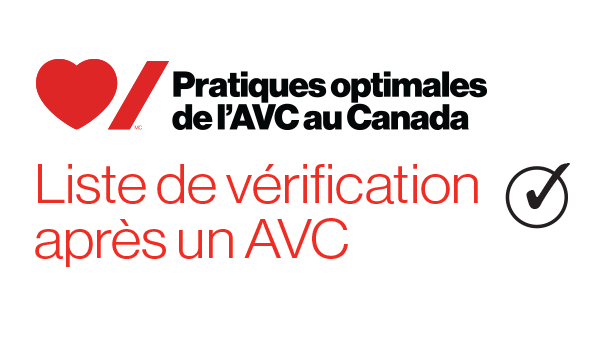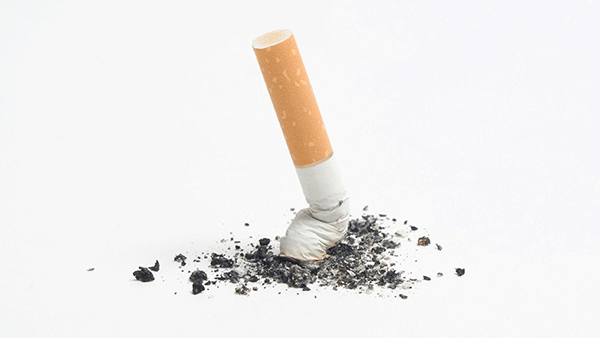- Définition et considérations
- 1. Évaluation initiale des besoins en matière de réadaptation post-AVC
- 2. Soins offerts dans les unités de réadaptation post-AVC
- 3. Prestation des soins de réadaptation post-AVC en milieu hospitalier
- 4. Réadaptation à domicile et en consultation externe post-AVC (y compris le congé précoce assisté)
- 5.1 Prise en charge des membres supérieurs après un AVC : principes généraux et traitements
- 5.2 Amplitude du mouvement et spasticité de l’épaule, du bras et de la main
- 5.3 Prise en charge de la douleur à l’épaule et du syndrome douloureux régional complexe (SDRC) après un AVC
- 6.1 Équilibre et mobilité
- 6.2 Spasticité des membres inférieurs après un AVC
- 6.3 Prévention et prise en charge des chutes
- 7. Évaluation et prise en charge de la dysphagie et de la malnutrition après un AVC
- 8. Réadaptation en cas de troubles de la perception visuelle
- 9. Prise en charge de la douleur centralisée
- 10. Réadaptation en vue d’améliorer la capacité à parler et à communiquer
- 11. Téléréadaptation après un AVC
5.3 Prise en charge de la douleur à l’épaule et du syndrome douloureux régional complexe (SDRC) après un AVC
6ème édition - 2019 MISE À JOUR
Recommandation
Définition : Aux fins de l’interprétation des présentes recommandations, « précoce » désigne le niveau de preuve pour les traitements qui s’appliquent aux patients dont l’AVC date de moins de six mois et « tardif » désigne le niveau de preuve pour les traitements qui s’appliquent aux patients dont l’AVC de référence date de plus de six mois.
Remarque : La douleur à l’épaule peut être due à l’hémiplégie même, à une lésion ou à un trouble orthopédique acquis causés par la spasticité et par l’atteinte à l’intégrité de l’articulation et du tissu mou.
A. Prévention de la douleur à l’épaule hémiplégique et de la subluxation
- Les stratégies de protection des articulations devraient être employées pendant les stades précoces et de flaccidité du rétablissement, afin de prévenir ou de réduire la blessure et la douleur à l’épaule. Voici quelques exemples:
- Le positionnement et l’appui du bras au repos [niveau de preuve B].
- La protection et l’appui du bras lors de la mobilité fonctionnelle, en prenant soin d’éviter de tirer sur le bras touché [niveau de preuve C].
- La protection et l’appui du bras en fauteuil roulant, par exemple, par le plateau, l’appuie-bras ou un oreiller [niveau de preuve C].
- Hormis en cas de paralysie flasque, l’utilisation des harnais est déconseillée, car elle peut défavoriser l’usage du bras, empêcher son balancement, contribuer à la formation de contractures et nuire à l’image corporelle [niveau de preuve C].
- Les patients au bras flasque (c’est-à-dire, dont le score sur l’échelle Chedoke-McMaster est inférieur à 3) pourraient tirer avantage de la stimulation électrique [niveau de preuve : précoce – B; tardif – B].
- L’utilisation de poulies suspendues est à éviter [niveau de preuve A].
- Le bras ne devrait pas être déplacé passivement au-delà de 90 degrés de flexion et d’abduction, à moins que l’omoplate se fasse pivoter vers le haut et que l’humérus se fasse pivoter latéralement [niveau de preuve B].
- Le personnel de soins, les patients et leur famille devraient apprendre comment protéger, positionner et manipuler correctement le bras atteint [niveau de preuve A].
- Par exemple, positionner et appuyer le bras avec précaution lors de mouvements assistés comme les transferts; éviter de tirer sur le bras touché [niveau de preuve C].
B. Évaluation de la douleur à l’épaule hémiplégique
- L’évaluation d’une épaule hémiplégique douloureuse pourrait comprendre l’examen du tonus, des mouvements actifs, des modifications de la longueur des tissus mous, de l’alignement des articulations de la ceinture scapulaire, de la posture du tronc, des niveaux de douleur, des changements orthopédiques de l’épaule et des répercussions de la douleur sur la santé physique et psychologique [niveau de preuve C].
C. Prise en charge de la douleur à l’épaule hémiplégique
- Le traitement de la douleur à l’épaule hémiplégique, associée aux limites de l’amplitude de mouvement, comprend des techniques de mobilisation et d’étirement effectuées délicatement. Celles-ci impliquent habituellement une augmentation de la rotation externe et de l’abduction [niveau de preuve B].
- L’amplitude des mouvements actifs devrait être augmentée graduellement, conjointement avec la restauration de l’alignement et le renforcement des muscles faibles dans la ceinture scapulaire [niveau de preuve B].
- Il a été démontré que l’application de ruban kinésiologique sur l’épaule affectée réduit la douleur [niveau de preuve A].
- À moins de contre-indications, les analgésiques (comme l’ibuprofène et les narcotiques) sont envisageables pour soulager la douleur, au cas par cas [niveau de preuve C].
- Des injections de toxine botulique dans les muscles sous-scapulaires et pectoraux peuvent soulager la douleur à l’épaule hémiplégique, qui semble liée à la spasticité [niveau de preuve B].
- Les injections sous-acromiales de corticostéroïdes sont possibles chez les patients dont la douleur paraît être liée à une lésion ou à une inflammation de l’espace sous-acromial (coiffe des rotateurs ou bourse) dans l’épaule hémiplégique [niveau de preuve B].
Remarque : Pour de plus amples renseignements sur la prise en charge de la douleur, voir la section 9.
D. Œdème des mains
- Pour les patients souffrant d’œdème des mains, les interventions suivantes peuvent être envisagées:
- les exercices d’amplitude de mouvement passifs, actifs ou actifs assistés [niveau de preuve C];
- la surélévation du bras au repos, si possible [niveau de preuve C];
- le massage rétrograde [niveau de preuve C];
- la mobilisation douce de niveaux 1 et 2 des mouvements accessoires de la main et des doigts [niveau de preuve C].
- Les données probantes ne suffisent pas pour conseiller ou non l’utilisation des vêtements de compression, comme les gants de compression [niveau de preuve C].
E. Syndrome douloureux régional complexe (SDRC) (également appelé syndrome épaule-main ou algodystrophie sympathique réflexe)
- Prévention: pour prévenir le SDRC, il faut utiliser des exercices d’amplitude de mouvement passifs, actifs ou actifs assistés [niveau de preuve C].
- Diagnostic : il doit s’appuyer sur les constatations cliniques, notamment la douleur et la sensibilité des articulations métacarpo-phalangiennes et interphalangiennes proximales, pouvant être associées à un œdème sur le dos des doigts, des troubles trophiques cutanés, l’hyperesthésie et l’amplitude restreinte du mouvement [niveau de preuve C].
- Une scintigraphie osseuse de trois phases (qui indique une absorption péri-articulaire accrue dans les articulations distales du membre supérieur) peut aider à formuler le diagnostic [niveau de preuve C].
- Prise en charge: pour réduire l’œdème et la douleur, un traitement précoce aux corticostéroïdes oraux qui commence par des doses de 30 à 50 mg par jour pendant trois à cinq jours, puis diminue progressivement sur une période d’une à deux semaines est possible [niveau de preuve B].
L’incidence de la douleur à l’épaule après un AVC est élevée. Parmi les patients adultes ayant subi un AVC, 72 % affirment avoir eu au moins un épisode de douleur à l’épaule pendant la première année suivant l’événement. Cette douleur peut masquer les progrès au chapitre du mouvement et des fonctions ou empêcher la participation du patient à des activités de réadaptation telles les thérapies ou les activités axées sur la vie quotidienne. La douleur à l’épaule hémiplégique peut contribuer à la dépression et à l’insomnie, et réduire la qualité de vie.
Pour l’évaluation et la prise en charge appropriées et en temps opportun de la douleur à l’épaule, le système doit disposer des éléments suivants:
- la disponibilité de soins de réadaptation post-AVC organisés, notamment des unités de réadaptation post-AVC dotées d’une équipe interdisciplinaire ayant reçu la formation appropriée et comptant le personnel nécessaire;
- le matériel nécessaire pour un bon positionnement du membre (p. ex., des oreillers et appuie-bras).
Pour l’évaluation et la prise en charge appropriées et en temps opportun de la douleur à l’épaule, le système doit offrir les éléments suivants:
- L’examen initial de l’amplitude du mouvement actif ou passif de l’épaule, selon l’échelle Chedoke-McMaster Stroke Assessment, et l’évaluation de la rotation externe effectuée par des cliniciens expérimentés en réadaptation post-AVC.
- L’accès en temps opportun à des services de réadaptation post-AVC spécialisés et interdisciplinaires pour la prise en charge de la douleur à l’épaule.
- L’accès en temps opportun à des thérapies de réadaptation dont l’intensité et les modalités de traitement sont indiquées pour la prise en charge ou la réduction de la douleur à l’épaule des survivants de l’AVC.
- La disponibilité de services de réadaptation dans les centres de soins infirmiers et de soins de longue durée ainsi que dans les programmes communautaires et en consultation externe.
- Des médecins ayant reçu une formation en soins de l’AVC et, au besoin, en injections de toxine botulique et en injections intra-articulaires dans l’épaule.
- Un régime d’assurance-médicaments équitable et universel doit être élaboré et mis en œuvre en partenariat avec les provinces afin d’améliorer l’accès à des médicaments rentables pour toute la population, et ce, peu importe la situation géographique, l’âge ou le revenu. Ce programme doit comprendre une liste étoffée de médicaments admissibles pour laquelle l’État est le premier payeur.
- Proportion des patients ayant subi un AVC qui souffrent de douleur à l’épaule dans un hôpital de soins de courte durée, dans un milieu de réadaptation hospitalier ou dans la collectivité après la sortie (l’outil du SNIR comprend une question d’autoévaluation de la douleur à l’admission et à la sortie).
- Durée du séjour des patients souffrant de douleur à l’épaule dans un hôpital de soins de courte durée ou dans un milieu de réadaptation pour patients hospitalisés (comparativement à ceux qui ne souffrent pas de douleur à l’épaule).
- Proportion des patients ayant subi un AVC qui signalent une douleur à l’épaule lors du suivi après trois et six mois.
- Changement du score d’intensité de la douleur à l’épaule, à partir des données de référence jusqu’à des périodes déterminées de mesure.
- Changements du score de motricité, à partir des données de référence jusqu’à des périodes déterminées de mesure.
- Amplitude de la rotation externe de l’épaule avant et après les soins pour la douleur à l’épaule.
- Proportion des patients chez qui l’amplitude du mouvement est réduite en raison de la douleur à l’épaule.
Notes relatives à la mesure des indicateurs
- Indicateur de rendement 4 : des échelles uniformisées devraient servir à mesurer la douleur et l’amplitude du mouvement.
- Certaines données doivent être extraites des dossiers médicaux. La capacité des professionnels de la santé à documenter la douleur à l’épaule peut avoir une incidence sur la qualité et la possibilité d’établir des rapports sur certains de ces indicateurs de rendement.
- Des outils de vérification utilisés à l’échelle locale peuvent faciliter la collecte de données sur la douleur à l’épaule qu’éprouvent les patients ayant subi un AVC.
Renseignements destinés aux fournisseurs de soins de santé
- Tableau 1 : Outils de dépistage et d’évaluation pour la réadaptation post-AVC (en anglais)
- Échelles de douleur (en anglais seulement)
- La sous-échelle d’évaluation de la douleur à l’épaule Chedoke-McMaster
- Info AVC
Informations destinées aux personnes ayant subi un AVC, à leur famille et à leurs aidants
- Prendre en main son rétablissement : fiche d’information sur la réadaptation et le rétablissement
- Prendre en main son rétablissement : fiche d’information sur les transitions et la participation communautaire
- Aphasia Institute (en anglais seulement)
- Liste de contrôle post-AVC
- Le répertoire des services et ressources de Cœur + AVC
- Votre cheminement après un accident vasculaire cérébral : un guide à l’intention des survivants de l’AVC
- Info AVC
Lien vers les tableaux de données probantes et la liste des références (en Anglais)
The use of supportive slings and supports may reduce the amount of subluxation and hemiplegic shoulder pain, although the evidence is conflicting. Ada et al. (2017) randomized 46 persons who were at risk of developing shoulder subluxation following a recent stroke to use a modified lap-tray while sitting and a triangular sling while standing to support the affected arm for four weeks, while those in a control group used a hemi-sling while sitting and standing. At the end of the treatment period there were no significant difference between groups in terms of shoulder subluxation (MD -3 mm, 95% CI -8 to 3), pain at rest (MD -0.7 out of 10, 95% CI -2.2 to 0.8), shoulder external rotation (MD -1.7 out of 10, 95% CI -3.7 to 0.3) or having less contracture of shoulder external rotation (MD -10 deg, 95% CI -22 to 2). An earlier Cochrane review (Ada et al. 2005) included the results from 4 RCTs evaluating the use of strapping (n=3) and hemisling (n=1). All patients were in the acute phase of stroke (less than 4 weeks) with a flaccid arm with no history of shoulder pain. The number of pain-free days associated with treatment was significantly greater; (mean difference: 13.6 days, 95% CI 9.7 to 17.8, p<0.0001); however, the results from only two studies were included in the pooled result. In another systematic review that specifically evaluated the use of strapping (Appel et al. 2014), the authors concluded the efficacy of shoulder strapping to alleviate upper limb dysfunction and shoulder impairments caused by stroke remains unknown, while acknowledging that shoulder strapping may delay the onset of pain in those with severe weakness or paralysis. A recent meta-analysis, including the results from five RCTs, reported that shoulder positioning programs were not effective in preventing or reducing the range of motion loss in the shoulders’ external rotation (Borisova & Bohannon 2009).
Electrical stimulation can be used for the prevention and management of shoulder subluxation. Vafadar et al (2015) included 10 trials of electrical stimulation evaluating the evidence for the effect of functional electrical stimulation on shoulder subluxation, pain and upper extremity motor function when added to conventional therapy. Pooling data from 6 trials showed that electrical stimulation was more effective than the conventional therapy alone in improving shoulder subluxation, when applied within the first 6 months of stroke (SMD= −0.70, 95% CI −0.98 to −0.42). Only data from two trials were available for the effect of electrical stimulation when applied 6 months after stroke. Lee et al. (2017) included the results of 11 trials evaluating the effectiveness of neuromuscular electrical stimulation (NMES) for the management of shoulder subluxation in both the acute and chronic stages of stroke. NMES was effective in reducing subluxation in the acute stage of stroke (SMD=-1.1, 95% CI -1.53 to -0.68, p<0.001) but not in the chronic stage (SMD=-1.25, 95% CI -1.61 to 0.11, p=0.07), but did not significantly reduce pain in either the acute or chronic stages. Ada and Foongchomcheay (2002) included participants with subluxation or shoulder muscle paralysis in both the acute and chronic stages of stroke, from seven RCTs. The results suggested that early treatment, starting with electrical stimulation for 2 hours per day increasing to between 4 and 6 hours per day, in addition to conventional therapy helps to prevent the development of hemiplegic shoulder while later treatment helps to reduce pain. In one of the largest RCTs, Church et al. (2006) randomized 176 patients to receive active or sham surface FES treatments in addition to conventional therapy, for four weeks following acute stroke. There was no significant difference between groups in measures of upper-limb function, or the prevalence of pain post intervention, at 3 months.
Treatment with botulinum toxin type a (BTX-A) may help to improve hemiplegic shoulder pain. A Cochrane review (Singh & Fitzgerald 2010), which included the results of 6 RCTs examined the efficacy of the use of BTX-A toxin in the treatment of shoulder pain. Treatment with BTX-A was associated with reductions in pain at 3 and 6 months, but not at 1 month following injection. De Boer et al (2008) randomized 22 patients, an average of 6 months following stroke with significant shoulder pain to receive a single injection of 100 U Botox or placebo to the subscapularis muscle in addition to some form of physical therapy. While pain scores improved in both groups over time, there was no significant difference at 12 weeks following treatment, nor was there significant improvement between groups in degree of humeral external rotation.
Intra-articular corticosteroids injections may also help to improve symptoms of shoulder pain. Rah et al. (2012) randomized 58 patients with chronic shoulder pain (at least 3/10 on a Visual Analog Scale (VAS) to receive a single subacromial injection of 40 mg triamcinolone acetonide or lidocaine (control condition), in addition to a standardized exercise program. There was significant reduction in the average shoulder pain level at day and night, at 8 weeks associated with steroid injection. In contrast, Snels et al. (2000) reported that in 37 patients with hemiplegic shoulder pain (≥ 4 on a 0 to 10 VAS) randomized to receive three injections (1-2 weeks apart) of 40 mg triamcinolone acetonide or placebo, active treatment was not associated with improvements in pain scores three weeks later. Dogan et al. (2013) found that compared to traditional rehabilitation alone, the addition of intra-articular steroid, and intra-articular steroid plus hydraulic distention significantly improved range of motion immediately after treatment and at 1-month follow-up. Both steroid groups had significant improvements on VAS score at rest and during activity but the group which received steroid plus hydraulic distention were significantly more effective than only the intra-articular steroid injection and therapy.
For patients with hand edema, results from a systematic review (Giang et al. 2016) suggest that mobilization exercises (i.e. range of motion exercises) may be effective in reducing hand edema in patients with acute stroke. Bandaging, intermittent compression, kinesio tape, neutral functional realignment orthosis, and hand realignment orthosis were not found to be effective treatments.
There is no definitive therapeutic intervention for complex regional pain syndrome (CRPS). Although a wide variety of preventative measures and treatments have been used including exercise, heat, contrast baths, hand desensitization programs, splints, medications, and surgical options, there is little evidence that many of the commonly-used treatments are effective. A Cochrane overview of reviews conducted by O’Connell et al. (2013) evaluated 19 studies that used a variety of interventions to treat pain and/or disability associated with CRPS. The authors found moderate quality evidence that intravenous regional blockade with guanethidine is not effective in CRPS and is associated with adverse events, low quality evidence for biphosphates, calcitonin or daily IV of ketamine for the treatment of pain compared to a placebo. Both motor imagery and mirror therapy may be effective for the treatment of pain compared to a control condition. There is some evidence that local anaesthetic sympathetic blockade, physiotherapy, and occupational therapy are not effective for CRPS. There is very low-quality evidence that compared with placebo, oral corticosteroids reduce pain.






